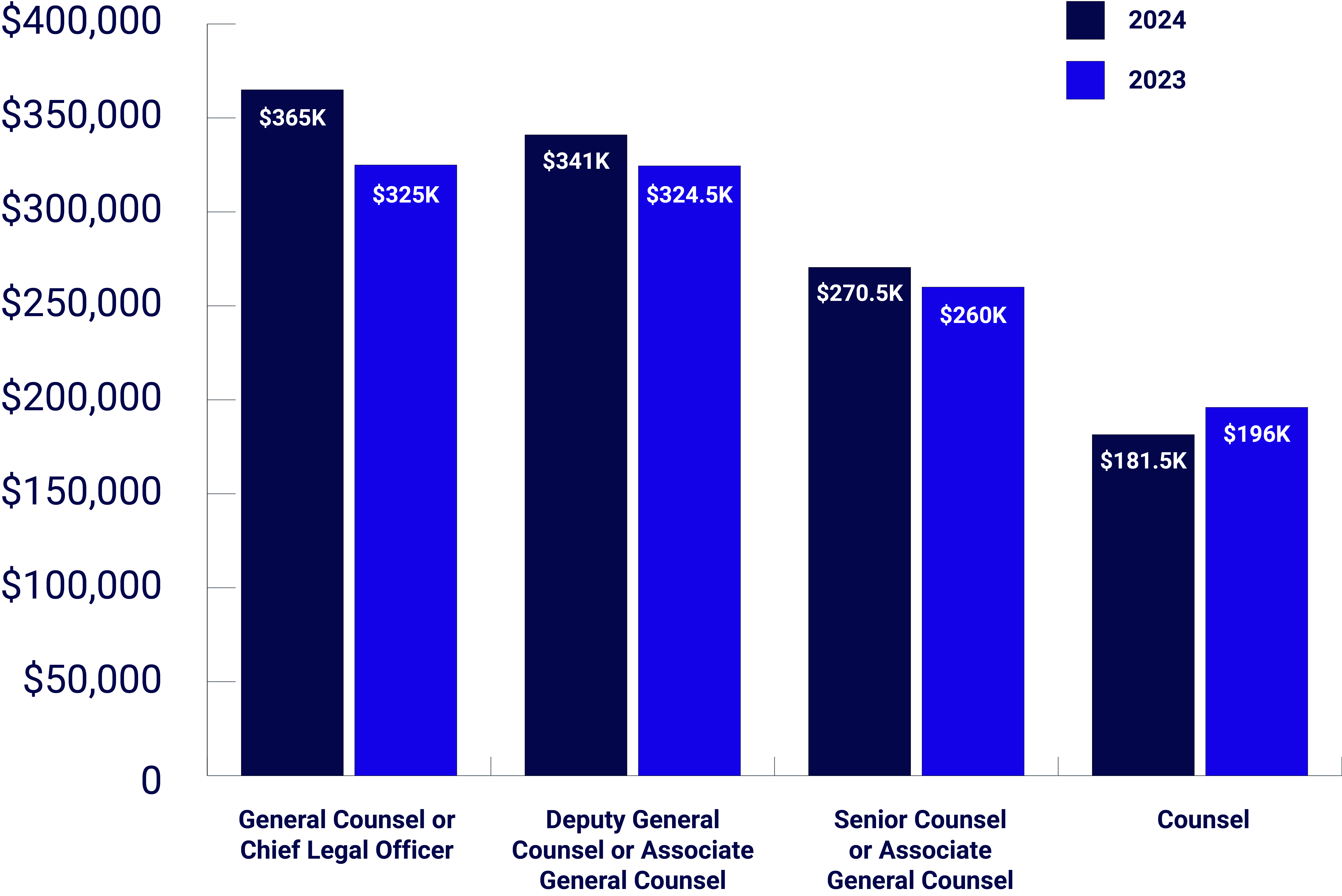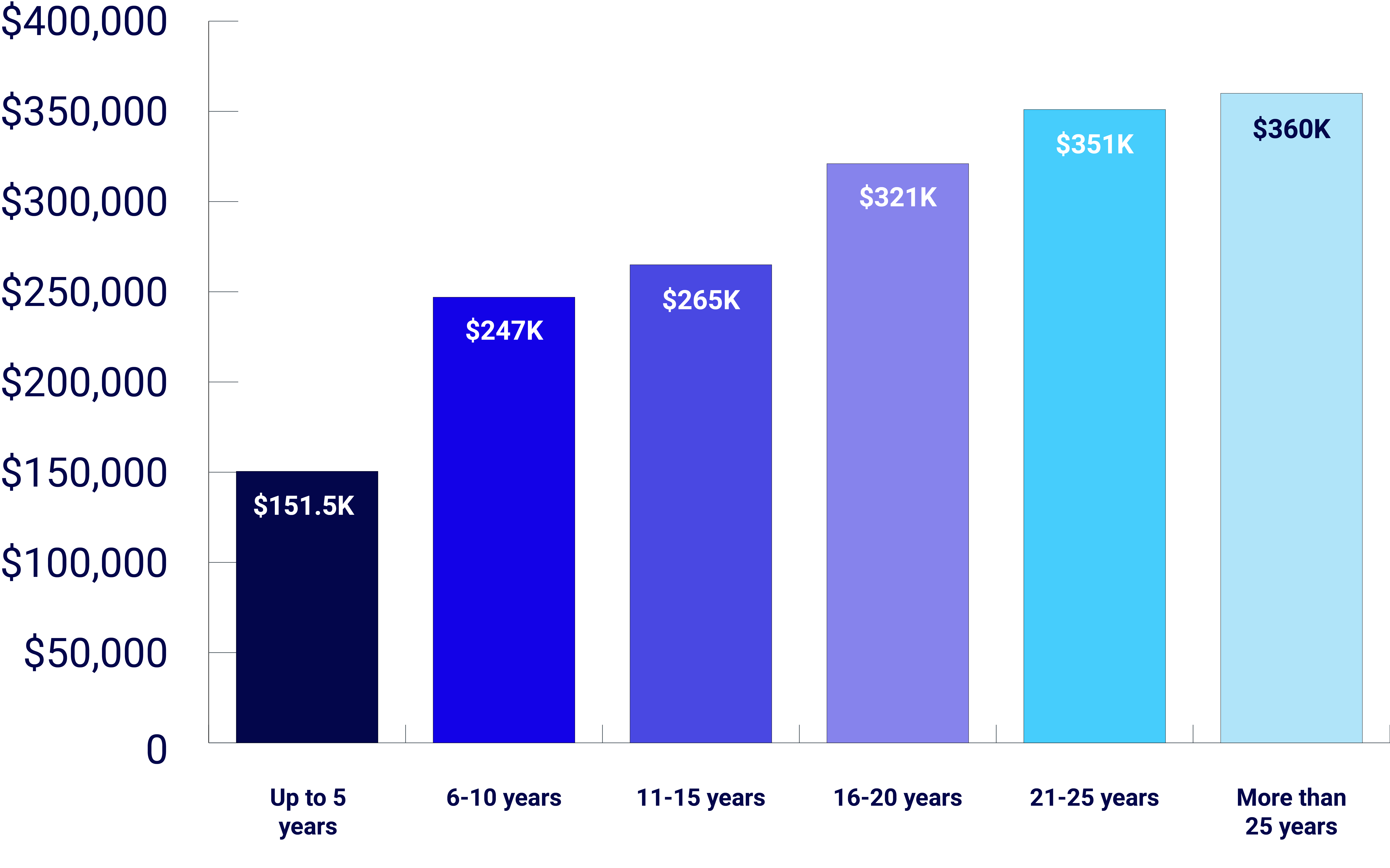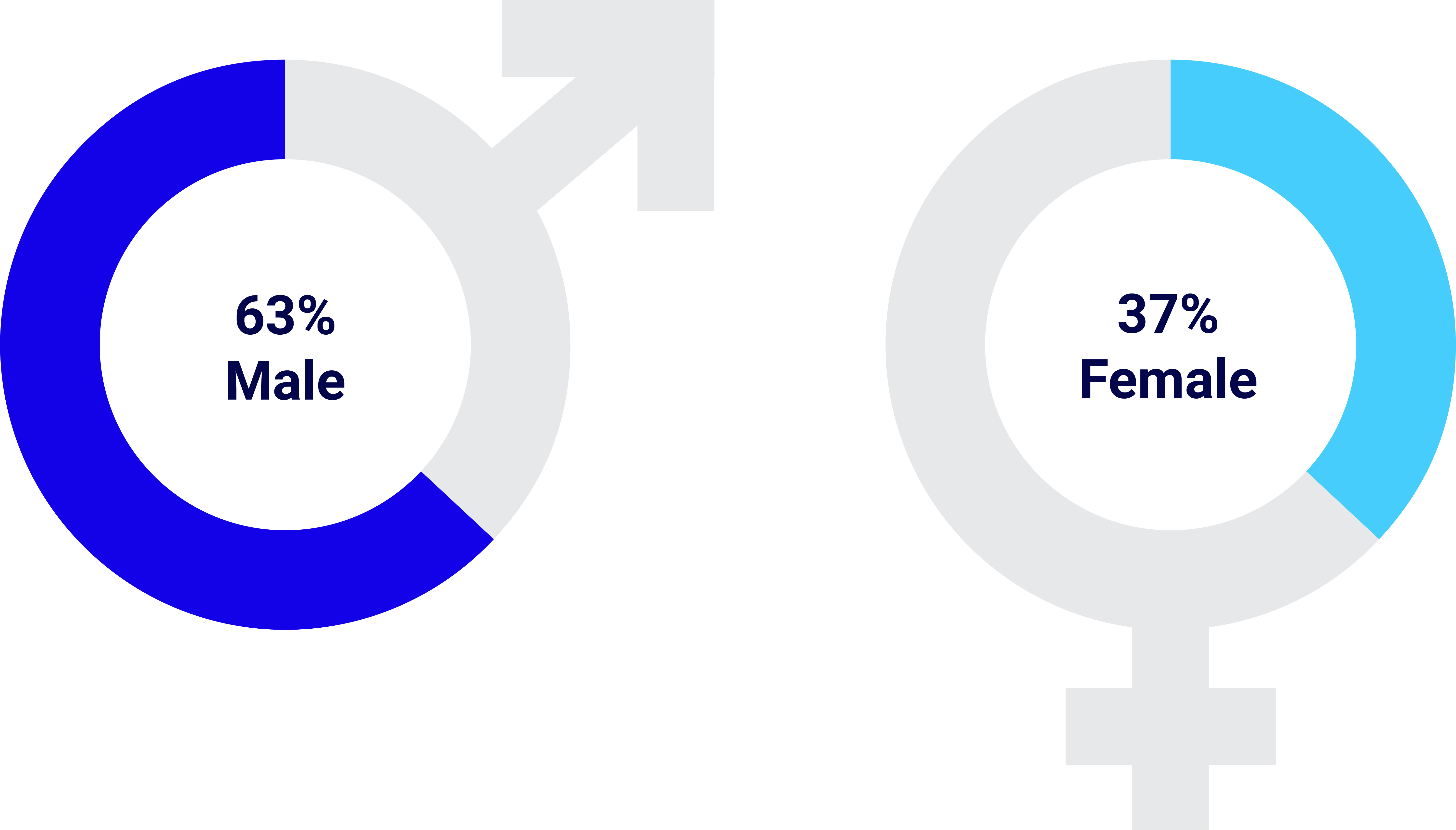Above the Law 2024 Survey
In-House Compensation
For ten years, the Above the Law 2024 In-house Compensation Survey Report has brought greater transparency to law firm associates considering a transition, law students or recent graduates exploring their options, and corporate legal departments seeking a benchmark. Each year’s findings are more eagerly awaited than the last. We share some highlights and invite you to download the full report.
Overview
Compensation rose at a healthy clip in 2024. But what is going on with junior counsel? Why has their median pay dropped by virtually the same percentage that general counsel and chief legal officer compensation rose? Just an anomaly, or is there a there, there?
Meanwhile, location remains important, with cities outperforming small towns. Not surprisingly, median pay is highest at Fortune 1000 companies. And while sectors like energy and finance tend to be more lucrative overall than manufacturing or technology, general counsel or chief legal officers in finance or technology are more likely to report total compensation of $500,000 or more. The highest paid leaders tend to work for employers that are private, not public. They are also more likely to be male than female.
Yes, friends, gender pay disparity is an enduring reality for in-house counsel. The gap is not as pronounced as it is in law firms, though — so how does it line up? Does company size play a role, or is the imbalance seen across the industry?
Finally, the burning question: Where does artificial intelligence fit into this landscape? There’s no doubt that AI is creating opportunities in the legal profession. But what are they, where are they, and how will it impact compensation momentum overall?
Let’s get right to it.
Median pay is rising, but not without a hitch
As we said, compensation is rising for in-house attorneys overall, with the notable exception of junior counsel. At $365,000, median pay for general counsel and chief legal officers was about 9 percent higher than last year. Junior-level counsel, meanwhile, have seen their median pay fall by a similar percentage in the same period, from $196,000 in 2023 to $181,500 in 2024. What’s up with that? Is it a fluke or is further investigation warranted?

Base pay and bonuses are also markedly more generous in cities of 1 million or more, where 49 percent of respondents collect $250,000 or more in base pay. Only 36 percent of those in smaller cities claim the same. Similarly, more than half (56%) of in-house counsel in large cities report receiving bonuses of at least 20 percent, compared to only 37 percent of respondents in smaller cities.
We know that law firm size contributes to pay differences, so what about the size of the legal department? The data is interesting. As we might’ve predicted, median compensation is lowest ($269,500) at one attorney, moving up to $280,000 for 2 to 5 attorneys. But then between 6 to 9 attorneys ($299,500) and 10 to 24 attorneys ($298,000) it’s neck-and-neck. Departments with 25 to 49 attorneys are the sweet spot where median pay jumps almost 9 percent to $339,000, after which it ticks down to a still respectable $325,500 at 50+.

Sadly, those who are more altruistic or civic-minded may find the work more psychologically gratifying or socially fulfilling than financially rewarding. Respondents who work in government or nonprofit institutions tend not to fall into the highest pay brackets.
Is the gap going undercover? Y oh Y
Male attorneys are more likely than female attorneys to report making $250,000 or more (49% of men versus 38% of women) and less likely to report pay below $200,000 (24% of men vs 33% of women). But, although gender pay inequities remain, there appears to be positive movement on this front; among GCs and chief legal officers, the gap has narrowed from 30 percent to 13 percent since 2023.
Indeed, the in-house gap appears almost negligible when compared to the earnings gap in solo and small firms, where high earners were more than twice as likely to be male. But wait, let’s look at bonuses. While 22 percent of male attorneys received bonuses of 40 percent or more, only 16 percent of female attorneys — 6 percent fewer — said the same. In addition, more men than women reported receiving stock as part of their compensation package (52% vs. 45%).
It will surprise no one, then, to learn that the highest earners ($500,000+) of in-house counsel are predominately male, and the margin is significant.

In-house counsel earning $500K+ by gender
So are things really getting better for women, or is the industry just finding more subtle ways to reward the Y chromosome? Download the report and we’ll let you be the judge.
California dreamin’
The innovation opportunity for legal professionals has never been greater. The sudden shift to hybrid and remote work drove unprecedented investments in technology. The advancement of the technologies themselves, not the least of which tap into artificial intelligence, is inspiring the legal industry to shed its cloak of resistance and embrace very real, very meaningful change.
Reading between the lines of this report makes this abundantly clear. Why is compensation generally higher on the West Coast and in the Mid-Atlantic region than in other parts of the country? Why are the biggest US paydays in California?
What is the West Coast known for if not Silicon Valley and its booming tech sector? More than 30 percent of West Coast respondents report base salaries of more than $300,000. Compensation packages in the Mid-Atlantic states, a technology hub in their own right, also reflect the sector’s ascendance.
The debate on the need to transform is over. But if you are behind — and if you haven’t started, you are behind — the surge in innovation and new, accessible applications for artificial intelligence (AI) are piloting the way forward (see what I did, there?). We’re already seeing profound and far-reaching changes that run the gamut, from AI-enabled automation and process improvements to faster, better legal research outcomes, to transformative enhancements in risk management and compliance.
Process improvements made possible by new technologies have resulted in tidy bonuses in finance and insurance. In fact, well over a third (40%) of respondents reporting from these industries had bonuses of 30 percent or more of their base salary.
Presaged, prioritized, prepared
We don’t claim to be savants, but we did see the writing on the wall. iManage has been laying the groundwork and building up for this change for many, many years. We’ve invested in the architecture, talent, and leadership that help make technological transformations a reality for our customers.
With strength, agility, and resilience — as well as the right tools and the right partners — you and your team can do more than simply ride the wave ... you can shred it.
Did we pique your interest? There’s so much more! Get the full report for all the deets. You can thank us later. :-)
Impress your friends, colleagues, or fellow grads with your sharp insights on in-house compensation — or just raise your IQ around what you should be earning or what your organization should be paying to attract the best talent. Why not reach out now and get your very own copy of this enlightening 40-page report?
About the report:
Above the Law has published a compensation report specifically for in-house counsel since they first gathered the data in 2015. This year’s survey was conducted between June and September of 2024 and includes responses from more than 1,100 attorneys, representing organizations of all sizes and more than a dozen industries.

